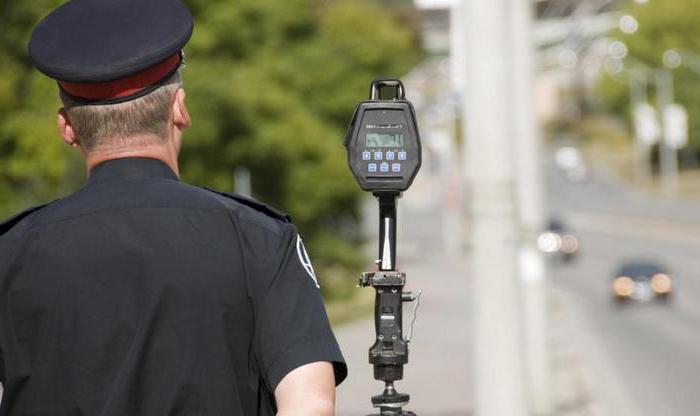Administrative violation and administrative liability are special legal categories. They are regulated by relevant standards. They provide the grounds on which the study of materials begins, the conditions under which it is completed, and the entities subject to sanctions.

CAO
About administrative offenses stated in many acts. However, the basic information is contained in the industry regulatory document. It is the Code of Administrative Offenses. Particular attention should be paid to Art. 28.1. It establishes the grounds on which the institution of an administrative offense is permitted.
The list provided in the article is considered exhaustive. In accordance with these grounds, a study of the circumstances begins when there is sufficient information indicating the commission of an offense, the materials in which such information is present, as well as well-founded statements and messages from individuals, the media or organizations. Clause 3 of Part 1 of this article defines special entities from which data may be received on what is an administrative offense and administrative responsibility. In particular, this refers to misconduct for which a penalty of disqualification is provided.
Grounds
The initiation of an administrative case is carried out when:
- Direct detection officials who are authorized to draw up acts fixing the misconduct, sufficient information indicating the presence of such an event.
- Revenues from law enforcement, as well as other government agencies, local government structures, public organizations, in which there is information about misconduct.
- Acceptance of applications from individuals and legal entities, representatives of the media, indicating an administrative offense.
- Fixing misconduct in the field of traffic by automatic technical means having the corresponding functions, or film and photography devices.
- Confirmation of the information contained in the application or message of the vehicle owner / owner that in the cases stated in paragraph 4 the car was in use by another person.
The provisions of paragraphs 2 and 3 of Article 28.1, directly related to the content of Article 28.3, prescribe that the initiation of a case of an administrative offense of a certain type is carried out by an authorized official for such a procedure. In this regard, and also taking into account the specifics of considering the circumstances of such misconduct in comparison with criminal trials, the corresponding decision is taken without the consent of the prosecutor. 
Differentiation
At the initial stage, the correct qualification of the event is crucial. The composition of an administrative offense may border on a crime. Differentiation of events is carried out according to the norms of the Criminal Code. They present qualifying signs of acts. For example, it could be the size of the harm done. In some cases, the administrative offense borders on a disciplinary offense. When qualifying events, they should also be differentiated. In these cases, Art. 2.5 CAO.
General order
The Law on Administrative Offenses requires that due process be taken.From this moment, the study of materials and clarification of circumstances will be considered as initiated procedures. By procedural should include actions relating to the execution of acts, decisions, definitions. An appeal of these documents is carried out in the manner prescribed in Sec. thirty.
Drawing up an act
The protocol on an administrative offense acts as a procedural document. It is considered the basis for the start of appropriate action. In this act, the very fact of committing an offense is recorded directly. The protocol on an administrative offense contains information about who, when and where it was drawn up. Of particular importance is the name of the position of the person who drew up the act. When a document is executed by an unauthorized entity, it is recognized as void and returned to the body in which it was drawn up.

Subject Identification
The Law on Administrative Offenses requires the obligatory indication in the act of data on the person in respect of whom he is drawn up. The identity of the subject is established by the documents that he has. In case of their absence, the data named by him verbally are subject to verification. To establish identity, it is allowed to detain the subject, search his belongings, vehicle, seize documents and items that he has. If witnesses or victims were committed during the misconduct, information about them shall be recorded in the protocol.
Mandatory data
The time of the event should be recorded in the document. This is of particular procedural importance, since the institution of an administrative case is allowed no later than 2 months from the date of its commission. In some cases, this period is extended to a year. The act must also contain information about the place of the event. This is necessary for the correct establishment of the authority authorized to consider this case. The act should also contain a description of the event. The characteristic of the offense allows you to correctly qualify it. The protocol shall indicate a specific article establishing penalties for misconduct.
Explanations
The protocol records the explanations of the person in respect of whom he is drawn up. Their presence acts as one of the sources of evidence of the circumstances of the offense. If necessary, explanations can be recorded separately and attached to the protocol. In accordance with this information, the presence of guilt is established, circumstances that contribute to the mitigation of sanctions are identified.

Guarantees
When drawing up the protocol, all participants in the proceedings are explained their duties and rights. As the most important guarantee of the reliability and completeness of the information present in the document, subjects are given the opportunity to familiarize themselves with it. Moreover, the persons with respect to whom the act is drawn up, can submit their comments and explanations on the content of the act in writing. An authorized person must attach them to the protocol. The preparation of the document ends with the signature of the employee who composed it, and the person who committed the offense. A copy of the document is handed to the latter against signature.
The powers of the prosecutor
They are installed in Art. 28.4. The Code of Administrative Offenses formulates powers of the prosecutor by listing the specific norms of the particular part. He may, in particular, start proceedings on administrative offenses related to non-compliance with the established procedure and rules:
- The election process.
- Disposal of objects forming the housing stock.
- Restrictions on the rights to control the vehicle and its operation, etc.
In addition, the prosecutor may order an administrative offense in other cases. For this, the fact of committing an offense must be revealed in the course of its supervisory activity. This provision is enshrined in Art. 22 and Art. 25 Federal Law "On the Prosecutor's Office of the Russian Federation."
Decision
The decision on an administrative offense made by the prosecutor must be sent to the authorized body immediately after drawing up. A longer period can be set if it is necessary to clarify additional circumstances of the event. The decision shall be made no later than 2 months from the date of establishing the violation. In Art. 28.2 the requirements are formulated for the officials who draw up the acts.

Simplified procedure
In cases specifically provided for in the Code of Administrative Offenses, proceedings on the case without drawing up an act are allowed. This, in particular, relates to a situation where the misconduct is deemed insignificant and a fine or warning may be imposed for it. If the protocol has not been drawn up, then the official at the scene of the incident draws up a sanction. When committing an offense in the field of traffic, a protocol is drawn up on imposing a fine in the manner prescribed by Art. 32.3. In this case, a receipt is issued to the subject. The fine on the spot is not charged. Its amount is transferred or paid voluntarily to the appropriate account. In case of non-payment, a fine is enforced. If the person who committed the misconduct disputes the actions of an official, then there is a transition to the proceedings in the usual manner. In this case, an appropriate act must be drawn up.

Direction of materials
After drawing up the protocol or the prosecutor’s decision, other material documents, they are transferred to the authority authorized to consider such cases. When sending materials, it is necessary to establish jurisdiction correctly. To do this, it is necessary to determine which court, body or employee is authorized to consider the case. If he is the head of the body whose official drew up the relevant act, then the materials are sent to him. The decision on violation, for the commission of which an arrest is prescribed as a punishment, is sent, together with the remaining information, to the court immediately after drawing up. An entity facing such a sanction may be detained for up to 48 hours.
Controversial issues
In some cases, during the preparation of materials for consideration in court, significant shortcomings of the protocol and other documents are discovered. In particular, it may be:
- Drawing up an act by an unauthorized person.
- Incompleteness of information that cannot be filled up when considering a case in court.
In these cases, Art. 29.4, part 1, paragraph 4 of the Code of Administrative Offenses. In accordance with the provisions of the article, a determination is made on the return of materials to the official, to the body that prepared the act. After receiving the protocol and other documents, the identified deficiencies are eliminated within three days. Materials with amendments / additions are sent to the court repeatedly no later than the next day after correction.

Exclusive circumstances
They are contained in Art. 24.5 Administrative Code. In the event that at least one of the exceptional circumstances takes place, the investigation of the offense committed shall be terminated. Accordingly, the official / body in the proceedings of which the case is in progress does not forward it to the court or to a higher official. An appropriate act must be issued on this. The decision to terminate the proceedings on the materials of the case must meet the requirements established in Art. 10/29. Regarding the case under consideration, the act must contain information on:
- The official / authority that has adopted this document.
- The place, date and time of the proceedings.
- The subject in respect of whom the act was drawn up.
- Circumstances identified during the proceedings and verification of information.
- A specific article of the Code of Administrative Offenses, which provides grounds for terminating the consideration of materials and excluding their transfer to court.
- The reasons for the decision.
- The order and terms of appeal of the act.
The decision also needs to resolve the issue regarding seized items and documents, things under arrest.